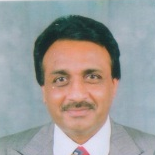International Journal of Information Technology and Computer Science (IJITCS)
IJITCS Vol. 8, No. 5, 8 May 2016
Cover page and Table of Contents: PDF (size: 545KB)
Performance Analysis of TCP and its Enhancement for Quality of Service in Mobile Wireless Networks in Single Traffic Using Prioritised Hard Handoff (PH2)
Full Text (PDF, 545KB), PP.88-94
Views: 0 Downloads: 0
Author(s)
Index Terms
Base station, handoff, immediate-recovery, loss-predictor, mobile station, NDG, TCP
Abstract
The research activities in mobile computing and wireless networks strongly indicates that mobile computers and their wireless communication links will be an integral part of the current internet works. Communication over wireless links is characterised by limited bandwidth, high latency, high bit-error rates and temporary disconnections. Most often, networks with wireless links and mobile hosts incur significant losses due to handoff. It is also most important that in wireless environment TCP (transmission control protocol) causes degraded end-to-end performance. In this paper, we tried to give solutions to these problems. We adopt a new method to improve the end-to-end reliable transport performance in mobile wireless environment by incorporating changes to network-layer at the base station and mobile host and preserve end-to-end semantics of TCP. The methodology employs NDG (normalised delay gradient) loss-predictor function to determine congestion losses from that of transmission loss. The sender window can adjust its size depending on the loss information. If the loss is due to congestion, congestion control algorithm is invoked to decrease the flow rate. If the loss is due to handoff (transmission loss), immediate-recovery algorithm is invoked to recover the losses caused by the sender TCP. Stochastic equations are used to analyse, i) arrival rate handoff calls, ii) blocking probability of handoff request, iii) distinguish packet loss due to congestion or handoff, iv) dynamics of sender window, v) queue length at the ingress point of the BS router , vi) throughput, and vii) the losses due to congestion and handoff blocking. Our results provide better way understanding the problem of calls drop due to handoff, and providing most accurate solutions for mobile wireless system.
Cite This Paper
Goudru N.G, Vijaya Kumar B.P, "Performance Analysis of TCP and its Enhancement for Quality of Service in Mobile Wireless Networks in Single Traffic Using Prioritised Hard Handoff (PH2)", International Journal of Information Technology and Computer Science(IJITCS), Vol.8, No.5, pp.88-94, 2016. DOI:10.5815/ijitcs.2016.05.10
Reference
[1]Hari Balakrishnan, Venkata N. Padmanabhan, Srinivasan and Randy H. Katz, “A comparision of mechanism for improving TCP performance over wireless links”, Proc. ACM SIGCOMM, Stanford, CA, August 1996.
[2]Hari Balakrishnan, Srinivasan Seshan, and Randy H. Katz, “Improving Reliable Transport and Handoff Performance in Cellular Wireless Networks”, ACM Wireless Networks Journal (WINET), 1(4), December 1995.
[3]D.J.Leith, P.Clifford. “Modeling TCP dynamics in wireless networks”, Hamilton Institute, NUI Maynooth.
[4]Qing-An Zeng, and Dharma P. Agarwal, “Handbook of wireless networks and mobile computing”, John Wiley and Sons, Chapter1, 2002.
[5]Biswajit Bhowmik, “Priority based hard handoff management scheme for minimising congestion control in single traffic wireless mobile networks”, International Journal of advancements in technology, Vol. 2, No. 1, ISSN 0976-4860, January 2011.
[6]Raj Jain, “A delay-based approach for congestion avoidance in interconnected heterogeneous computer networks”, ACM Computer communication review, vol. 19, pp 56-71, 1989.
[7]Saad Biaz, and Nitin H.Vaidya, “Sender-based heuristics for distinguishing congestion losses from wireless transmission losses”, technical report-98-013, Department of Computer Science, Texas Aand M University, USA, 2003.
[8]David A. Hayes and Grenville,”Revisiting TCP congestion control using delay gradient”, Centre for advanced internet architectures, Swinburne University of Technology, Melbourne, Australia, 2011.
[9]Biswajit Bhowmik, “A comparison study on selective traffic models with handoff management schemes for wireless mobile network infrastructure”, International journal of technology and computer science, vol.02, pp. 66-72, 2013 in MECS press.
[10]Biswajit Bhowmik, Pooja, Piyali Sarkar and Nupur Thakur, “Modeling prioritised hard handoff management scheme for wireless mobile networks”, International journal of computer networks and information security, vol.8, pp. 21-32, 2012 in MECS press.
[11]Biswajit Bhowmik, Pooja, Piyali Sarkar and Nupur Thakur, “Experimental analysis of Xie and Kuek’s traffic model handoff scheme in wireless networks”, International journal of engineering and electronic business, vol.1, pp. 34-43, 2012.
[12]ChengGang Liu, ZhenHong Jia, and Xi-Zhong Qin, “Improvement priority handoff scheme for multiservice wireless mobile networks”, Journal of networks, vol. 9, no.1, 2014.
[13]G. R. Ahmed Jamal, Tareq U. Ahmed, N. Shahadat, M. F. Islam, Marium B, “Adjusting Blocking Probability of Handoff Calls in Cellular Mobile Communication”, American Journal of Mobile Systems, Applications and Services, Vol. 1, No. 1, pp. 6-11, 2015.
[14]Uduak Idio Akpan, Constance Kalu, Aniebiet Kingsley Inyang, “Performance analysis of prioritized handoff schemes in wireless systems”, Communications, 2(1), 1-6, 2014.
[15]Nahla Nur Elmadina, R.Abdalrahman, M.Abudia and Nuha Bihary, “International Journal of Computer Science and Telecommunications”, Volume 6, Issue 5, May 2015.

